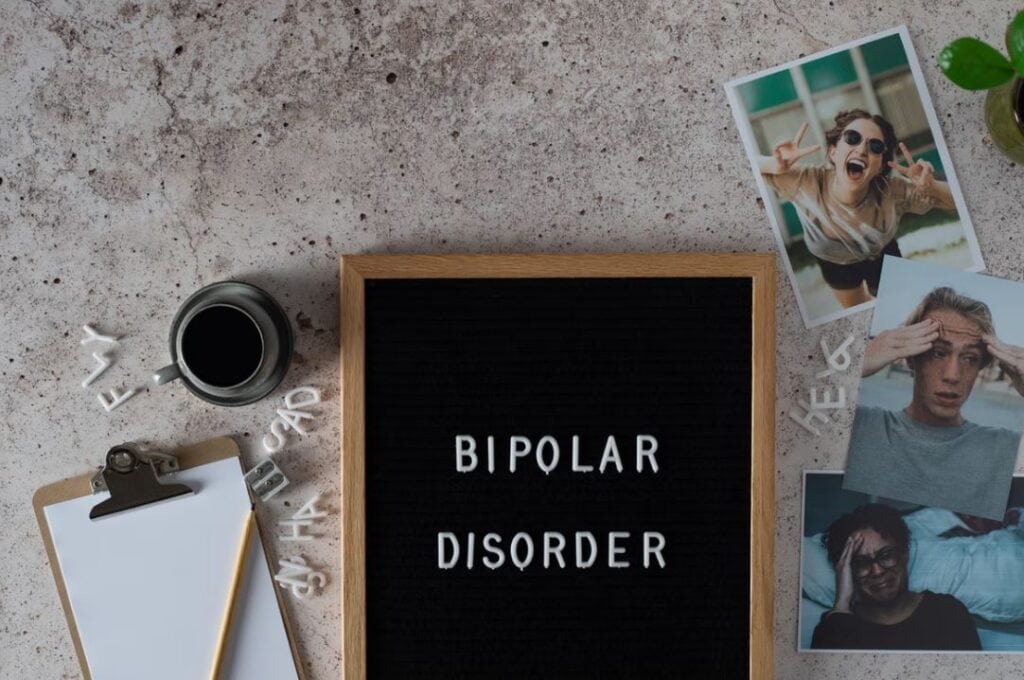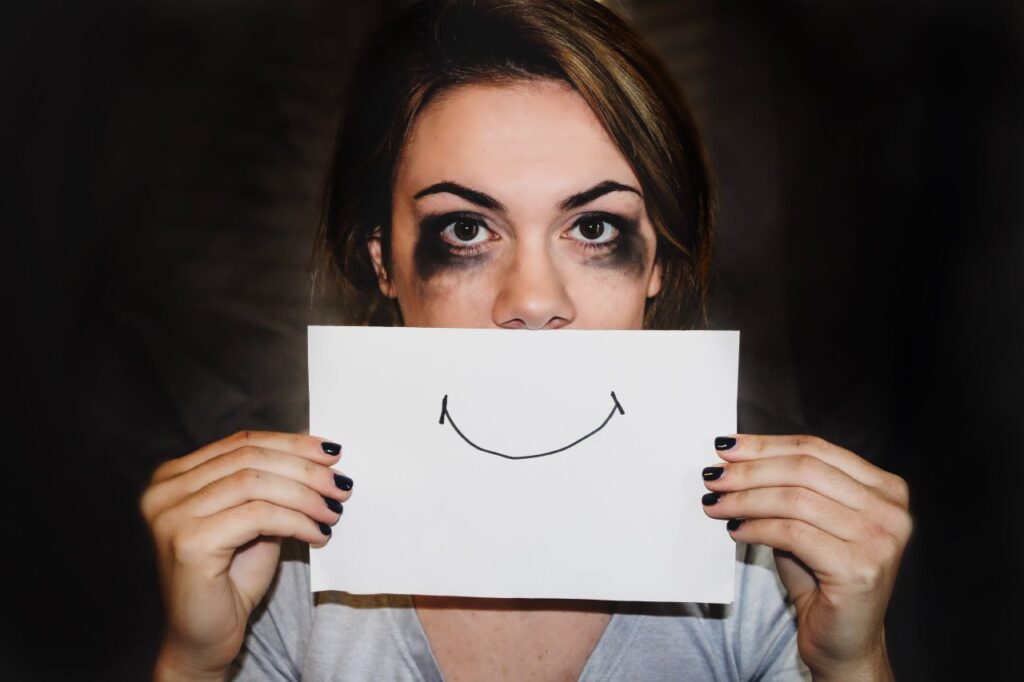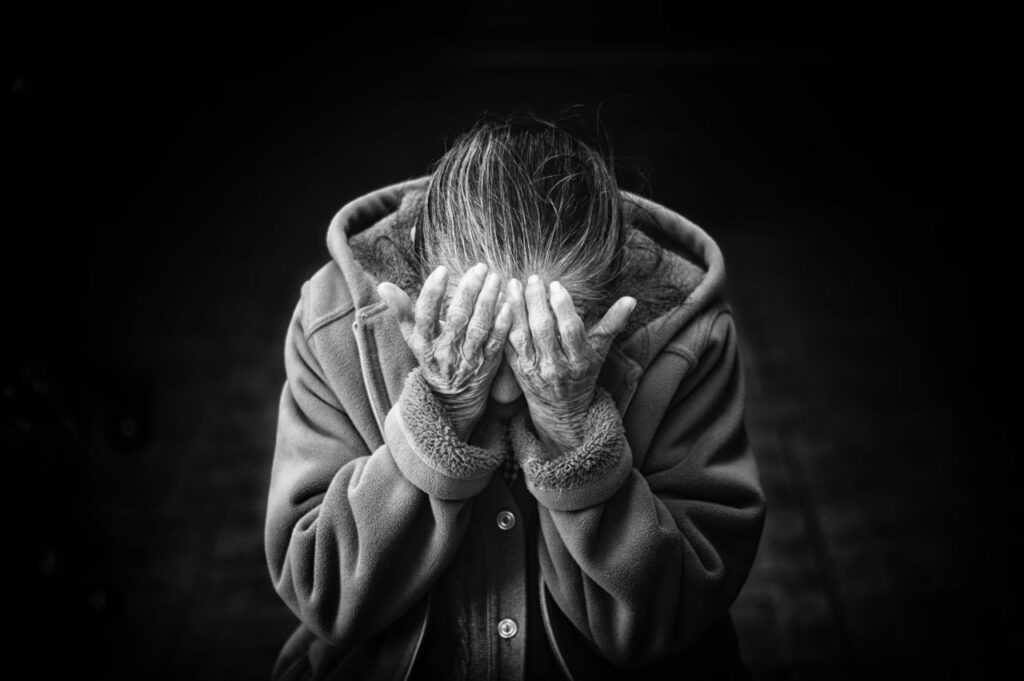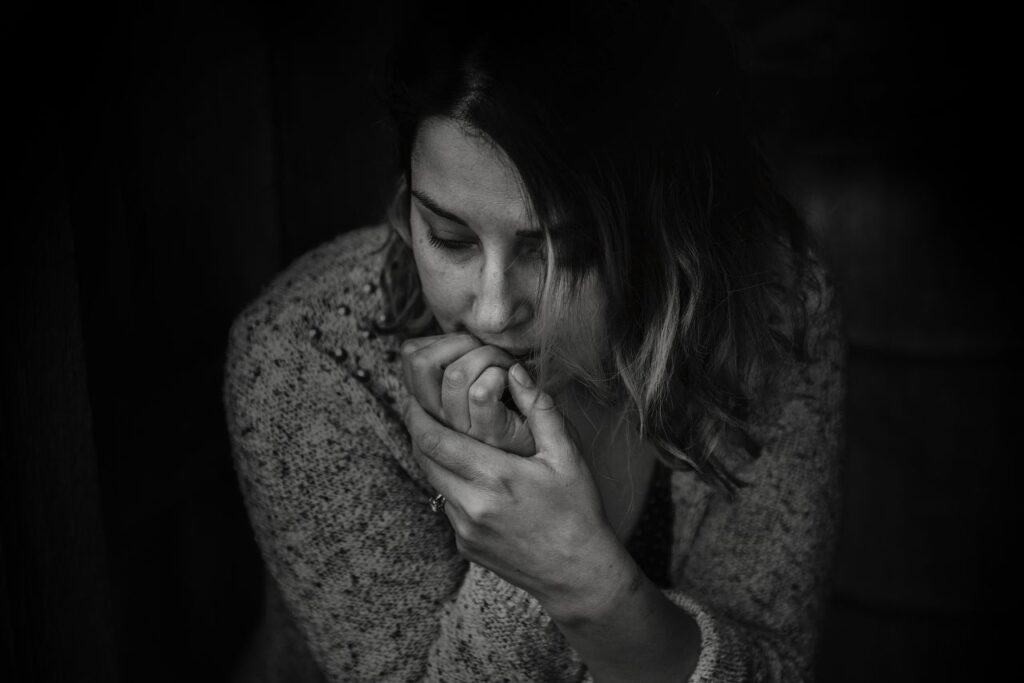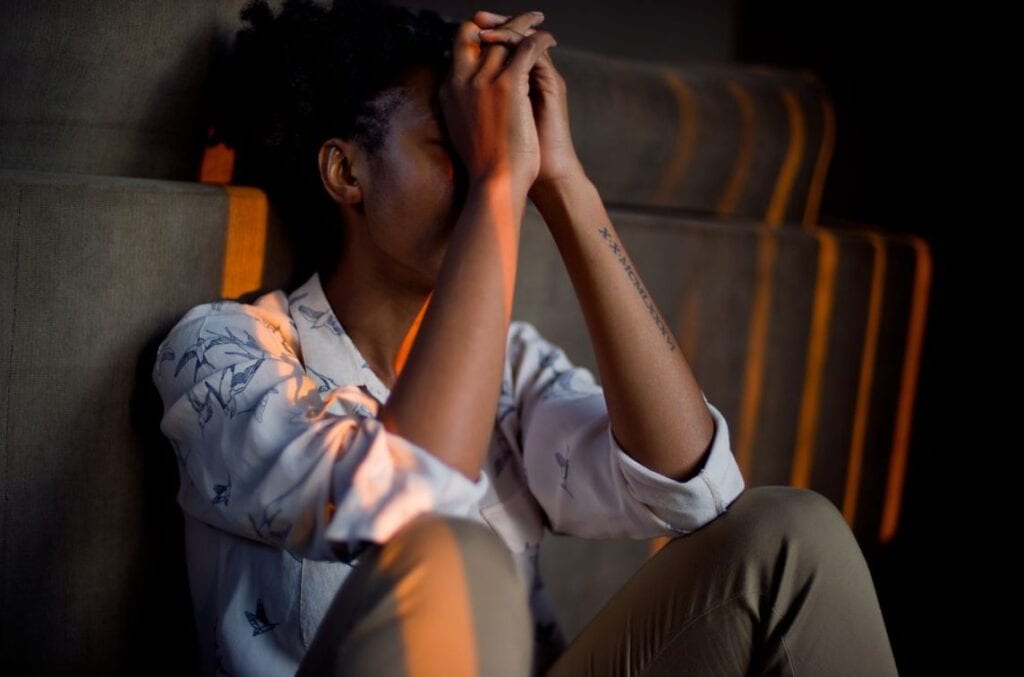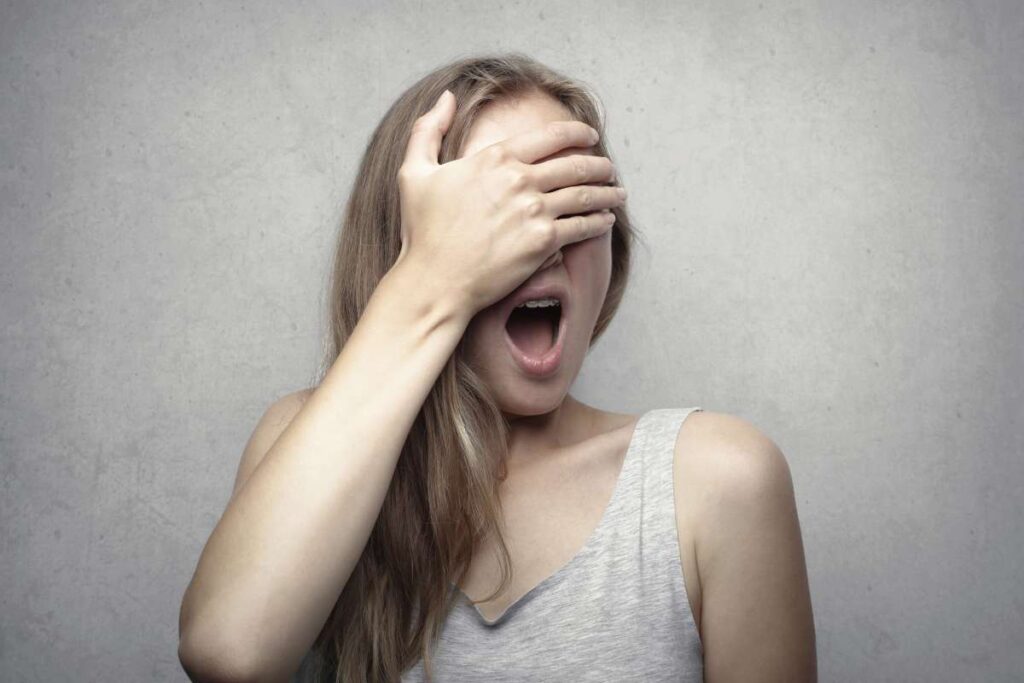Extreme mood swings are a hallmark of bipolar disorder, a mental condition. Extreme states of happiness or sadness, as well as erratic behaviour, are possible outcomes of such mood swings.
If you suffer from bipolar disorder, you must be prepared for potential outcomes and take measures to control your condition. In this article, we'll cover some of the basics of bipolar disorder in hopes that it'll help you have a better grasp of the subject. With all sincerity, we pray that you'll find this data useful.
What Exactly Is This 'bipolar Disorder'?
Bipolar disorder, often known as manic depression, is a mental condition characterised by alternating periods of high and low mood, altered energy levels, altered thought processes, and abnormal behaviour.
People with bipolar disorder may experience periods of great highs and lows, with the former often characterised by elation and vigour and the latter by despair and lethargy. During that in-between interval, they often report feeling fine. Lows and highs, or "highs" and "lows," are the two "poles" that make up what is known as "bipolar" disorder.
Someone with bipolar disorder may experience a state known as "mania," which is characterised by inflated feelings of excitement and self-assurance. As a result of these feelings, one may act impulsively or with reckless abandon, or become irritable. Delusions occur when a person is convinced of a false belief despite evidence to the contrary, while hallucinations occur when a person perceives sensory input that isn't actually present. Half of those who experience manic episodes also suffer from delusions.
Check this list of Rehabilitation Programmes to help you make an informed decision for your treatment.
The term "hypomania" is used to describe the less severe forms of mania, in which the individual does not experience delusions or hallucinations and the person's manic symptoms do not interfere with their daily lives.
A person is termed to be "depressive" when they are suffering clinically significant levels of melancholy or depression. These signs and symptoms are a dead ringer like those described by patients with major depressive disorder, commonly called "clinical depression." Individuals with clinical depression do not suffer hypomanic or manic episodes. The majority of patients with bipolar illness suffer mostly from depressive symptoms as opposed to manic or hypomanic ones.
Frequently Asked Questions
Bipolar disorder, which was formerly known as manic depression, is a mental health condition that causes extreme mood swings. These mood swings can include both emotional highs (mania or hypomania) and lows (depression) (depression). When you are depressed, you may experience feelings of sadness or hopelessness, and you may find that most activities no longer bring you interest or pleasure.
Patients suffering from bipolar disorder will benefit from increased awareness of the condition because it will help them better manage it. They won't make the common mistake of quitting their medication when they start to feel better because they will be aware that there is currently no treatment or cure for their condition and that it must be managed continuously.
People who suffer from bipolar disorder are prone to experiencing both episodes of severe depression as well as episodes of mania, which are characterised by excessive joy, excitement, or happiness, tremendous energy, a decreased need for sleep, and reduced inhibitions. The experience of having bipolar disorder is highly individual. There is no such thing as two people sharing the same experience.
There is currently no treatment available for bipolar disorder, which is also still occasionally referred to as manic depression. It is a chronic health condition that needs to be managed for the rest of one's life. On the other hand, a significant number of people who have this condition manage to lead normal lives, complete with families and careers.
Alterations in mood, levels of energy, and attention are just some of the symptoms of bipolar disorder, which is a serious condition that affects a relatively large number of people but is still relatively uncommon. A person's life can be profoundly altered as a result of it, but receiving treatment can significantly improve one's prognosis.
Are There Different Types Of Bipolar Disorder?

There are several distinct forms of bipolar disorder, including the following:
Bipolar I Disorder
It's characterised by erratic behaviour to an extreme, such as manic "up" periods that last at least a week or are so severe that they necessitate medical attention. The condition must be treated if it is to be managed. In addition, there are "down" periods that continue for two weeks or more.
Bipolar Ii Disorder
It's important to note that while persons with this form of Bipolar Disorder also experience extreme highs and lows, they are typically less severe than in those with Bipolar I.
Cyclothymic Disorder
Alternating manic and depressive episodes that last at least two years in adults and at least one year in adolescents and teenagers characterise this version of the disorder. When compared to manic-depressive or hypomanic phases of bipolar disorder, these phases are much milder.
The terms "Unspecified" or "Other Specified" Bipolar Disorder
are now used to describe situations where a person exhibits few or no classic manic or hypomanic symptoms, or where the symptoms do not persist for long enough to be termed true "episodes." There is a shift away from the diagnosis of "Bipolar Disorder Not Otherwise Specified" (previously "Bipolar Disorder Not Otherwise Specified").
Rapid Cycling
Rapid cycling is not a distinct form of bipolar disease but rather a way of describing the progression of symptoms in people with bipolar I or II. At least four major depressive episodes per year are required for eligibility. Women are more prone than males to experience this symptom of bipolar disorder, and it can arise or disappear at any time. Rapid cycling is a symptom of depression, and those who engage in it are more likely to consider or attempt suicide.
Substance abuse can precipitate extra manic or depressive episodes in people with any kind of bipolar illness. People with "dual diagnosis," or both bipolar disorder and alcohol use disorder, need to find a doctor who is experienced in treating both disorders.
What Exactly Are The Signs That Someone Has Bipolar Disorder?
Bipolar disorder is characterised by dramatic shifts in mood that do not adhere to a regular pattern. An individual may, instead, cycle between two extreme emotional states (such as depression and mania) rather than constantly shifting between them. Some examples of these crises can last for years.
The severity with which it presents itself varies from person to person and may increase or decrease with time.
Are you looking for the best rehab centre? Then Refocus Rehab Melbourne is the answer.
"The highs," or manic symptoms:
- Optimism, enthusiasm, and excitement to an extreme
- Snaps of impatience, rage, and hostility that follow a period of happiness
- Restlessness
- Poor emphasis and a hurried delivery characterise this speaker's performance.
- an increase in energy and a decrease in the need to sleep
- extraordinary sexual desire
- Taking extraordinary measures to get ready.
- Having questionable judgement
- Increased impulsivity associated with alcohol and drug abuse
- A decreased hunger and the imperative need for sleep
- enhanced happiness and faith in one's own potential
- Irresistibly distracted
A person who has bipolar disorder may exhibit the following symptoms during periods of depression (also known as "the lows"):
- Sadness
- Cost in terms of vitality Spent on unpleasant feelings like despair and inferiority complexes
- disinterest in activities that they used to enjoy Challenges in maintaining focus Forgetfulness
- Slowed speech, lack of libido
- the inability to enjoy anything
- Constant, uncontrollable crying
- Struggling to make a decision
- Irritability
- Sleep deprivation
- Insomnia
- Alterations in eating habits leading to either weight loss or gain Suicidal ideation or attempt Changes in appetite
- Trying to kill one's self
What Factors Contribute To The Development Of Bipolar Disorder?
The onset of manic-depressive symptoms cannot be pinned down to a single cause. Instead, scientists are trying to understand the potential influences on individual development. It may be a question of heredity, in which case the condition has been passed down down the generations and is present in you. Researchers aren't quite sure how or why this happens, but it's plausible that your brain's developmental trajectory plays a role.
What Are Bipolar Disorder Risk Factors?
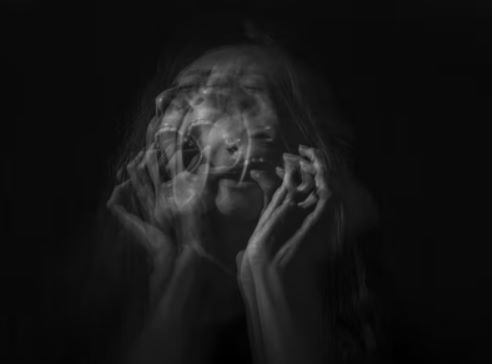
The onset of manic or depressive episodes in someone with bipolar illness typically occurs in late adolescence or early adulthood. Extremely rarely, it might manifest in younger children. It's possible for bipolar disorder to be inherited.
Both sexes have an equal chance of contracting it. Women, in contrast to men, are more prone to experience "rapid cycling," defined as four or more distinctly different mood episodes within a year. Bipolar women also experience more depressive episodes than men.
Women are more prone to experience bipolar disorder II and seasonal affective disorder, and the disorder tends to manifest itself later in life in females.
Women also disproportionately experience the co-occurrence of physical and mental health problems. Thyroid disease, migraine headaches, and anxiety disorders are all examples of such conditions.
Some of the risk factors for bipolar disorder are:
- Being in the midst of a traumatic or stressful period
- Misuse of drugs or alcohol
- The occurrence of specific medical issues
When manic or sad, many people with the disorder turn to substance misuse. Seasonal depression, comorbid anxiety disorders, post-traumatic stress disorder, and obsessive-compulsive disorder are all more common in people with bipolar disorder.
How Is Bipolar Disorder Diagnosed?
See a general practitioner or psychiatrist if you or someone you know shows signs of bipolar disorder. They will enquire about previous mental health diagnoses, as well as whether or not the condition runs in the family. There will also be a thorough psychiatric evaluation conducted to determine the likelihood of bipolar illness or another mental health problem.
Bipolar disorder is diagnosed by looking at the person's symptoms and ruling out any other possible explanations (such as low thyroid or mood symptoms caused by drug or alcohol abuse).
Mood swings and other changes in sleep, energy, thought processes, and behaviour are the most revealing signs.
The doctor can often tell the difference between bipolar illness and major depressive disorder or other psychiatric conditions that might cause changes in mood, thinking, and behaviour by talking to close friends and family members.
It's normal to feel anxious after learning you have bipolar disorder. The future may look cloudy at the moment. To what extent will this affect you personally and professionally?
However, the good news is that you have received a correct diagnosis. As a result, you'll be able to get the care you require. Unfortunately, a correct diagnosis of bipolar disease is frequently delayed by at least ten years.
The diagnosis of bipolar disorder in younger patients is more challenging. Their symptoms may mirror those of adults, but doctors may mistake them for attention deficit hyperactivity disorder (ADHD) or even bad behaviour.
Consult a child psychologist who is knowledgeable about bipolar disorder after discussing your concerns with your doctor.
What Kinds Of Treatments Are There For People Who Suffer From Bipolar Disorders?
The effects of treatment may be far-reaching. Many things can help you feel better, such as better medical treatment, medication, talk therapy, lifestyle changes, the support of friends and family, and encouragement from professionals. Bipolar disorder, commonly known as manic-depressive illness, continues to go untreated. It's a lifelong condition that requires constant attention. Even though they suffer from this illness, many people are able to live quite regular lives, replete with families and occupations.
Medication
Medication is the cornerstone of treatment and often consists of the following:
- Mood-regulating drugs include common names like Tegretol (carbomazepine), Lamictal (lamotrigine), lithium (lithium) and valproate (valproate). (Depakote)
- Cariprazine (Vraylar), lurasidone (Latuda), olanzapine (Zyprexa), and quetiapine are some examples of antipsychotic drugs (Seroquel)
- Antidepressants
- Mood stabilisers and antidepressants are a class of drugs that have similar effects on the brain.
- Hypnotics and sedatives like benzodiazepines are commonly prescribed as a means of combating anxiety and sleeplessness.
Both Bipolar Disorder And Suicide Are On The Rise.
Some people with bipolar disorder may experience suicidal ideas. Learn the signs to look out for, and if you notice any, seek immediate medical attention:
- Depression (changes in eating, sleeping, activities)
- Isolation Discussing suicide ideation, depression, or hopelessness The risk of harm increases when you make the mistake of isolating yourself.
- increasing your risk of being involved in accidents
- Chemical dependency or abuse
- having an unhealthy fixation on negative thoughts and events
- Having heart-to-hearts about the end-of-life process
- A fluctuating pattern of greater sobbing and diminished emotional expression
- the act of giving one's possessions to a good cause
Psychotherapy
There are a variety of treatment approaches that could be suggested, including:
Cbt Is Short For Cognitive-Behavioral Therapy.
CBT, or cognitive-behavioral therapy, is a type of talk therapy that aims to help patients identify and change destructive thought patterns via discussion and reflection. Talk therapy offers a safe space to examine how one might deal with their symptoms in various ways. Additionally, your therapist may be able to help you with:
- improving one's understanding of the mind's workings
- transform one's perspective to make one's emotions more manageable and learn and use other helpful coping mechanisms
Find out how to select the best therapist for your needs. This article will help you make a decision about Rehab Treatment Melbourne fees for different treatments
Psychoeducation
The goal of psychoeducation, a type of talk therapy, is to help patients become more knowledgeable consumers of health information and empowered decision makers about their health and treatment. With this knowledge, you and your loved ones will be more equipped to recognise and cope with early mood indications.
Therapy That Focuses On Interpersonal And Social Rhythms
Establishing and sticking to regular patterns of behaviour throughout the day, such as eating, sleeping, and exercising, is the focus of treatment centred on interpersonal and social rhythms. Lessening the frequency and severity of episodes of emotional instability may be the outcome of maintaining control over these aspects of daily life.
Bipolar Disorder Symptoms
At least one manic or hypomanic episode is required for a diagnosis of bipolar disorder.
Hypomania is less severe than mania, although both entail symptoms including euphoria, impulsive behaviour, and high energy levels. The symptoms of mania can have a negative impact on a person's day-to-day life, causing difficulties at school, in the workplace, and at home. Symptoms of hypomania rarely do.
Some persons who have bipolar disorder also suffer from significant depression episodes.
Mania, hypomanic mania, and depressive episodes are the hallmarks of bipolar disorder. A variety of symptom combinations characterise the various forms of bipolar disorder.
Bipolar I Symptoms
A diagnosis of bipolar I disorder requires:
- at least one manic episode lasting a week or longer
- symptoms that get in the way of normal life
- symptoms that cannot be attributed to a more specific medical, psychiatric, or substance-related issue
It's also possible that you'll show signs of psychosis, bipolar disorder, or both (known as mixed features). The quality of your life may suffer as a result of these symptoms. It's important to seek help from a trained professional as soon as possible if you experience any of these symptoms (more on this later).
Many patients with bipolar I do report experiencing episodes of hypomania and depression, although these states are not required for a diagnosis of bipolar I.
Bipolar II Symptoms
The following conditions must be met to make a diagnosis of bipolar II:
- at least one episode of hypomania with a duration of four days or more and the presence of at least three symptoms
- noticeable by others mood and activity changes associated with hypomania, which may or may not be affecting your daily life
- at least one major depressive episode lasting two weeks or longer, with the presence of five or more main depression symptoms that significantly impair daily functioning and that cannot be attributed to any other medical or mental health illness or drug use disorder
Psychotic symptoms are also possible during a depressive episode in bipolar II. Also possible are instances of "mixed mood," in which you experience both depressive and manic symptoms simultaneously.
However, manic episodes are not present in bipolar II. Instead, you will be diagnosed with bipolar I if you experience mania.
Cyclothymia Symptoms
Cyclothemia requires the following diagnostic criteria:
- symptoms of hypomania and depression, alternating, intermittently, for at least two years (1 year for children and adolescents)
- symptoms present for at least half of the two years and never absent for more than two months at a time, but never severe enough to warrant a diagnosis of hypomania or depression
- symptoms that aren't better explained by another medical or mental health problem or aren't caused by substance use, but which nonetheless cause considerable anguish and interfere significantly with everyday life
Cyclothymia is characterised by mood swings. These signs may not be as severe as those of manic or hypomanic bipolar disorder. Nonetheless, they typically persist for longer, meaning you'll have less time when you're symptom-free.
It's possible that hypomania won't have much of an effect on your daily life. However, even if your symptoms don't meet the threshold for a major depressive episode, depression can still cause significant suffering and impair your ability to carry out daily tasks.
Let's say you get a severe enough bout of depression or hypomania that it qualifies as a full-fledged episode. Depending on the severity of your symptoms, your diagnosis may shift from manic-depressive to another kind of bipolar illness.
Mania And Hypomania
During a manic episode, one's emotions may soar. Feelings of excitement, impulsivity, euphoria, and boundless energy are all possibilities. You may also find that your mind is racing and your nerves are on edge. Hallucinations and other psychotic symptoms can also occur.
It's common for people experiencing mania to act more recklessly than usual due to a false sense of invulnerability. Examples of this style of behaviour that are often highlighted include:
- consuming alcohol and drugs, or using them more frequently than normal, having intercourse without utilising a barrier device, and embarking on excessive shopping binges
But impulsiveness and risk-taking can show up in plenty of other ways, too. Maybe you:
- Suddenly leaving your employer
- drive significantly faster than usual, way beyond the speed limit, engage in extreme sports you normally wouldn't contemplate, and take off on a road vacation without telling anyone.
Symptoms of hypomania, which are typically linked with bipolar II disorder, are numerous but less severe than those of full-blown mania. Unlike manic episodes, hypomanic episodes typically don't cause problems in daily life. No psychosis is present during hypomanic episodes. They usually don't necessitate hospitalisation and don't persist as long as manic episodes.
Hypomania can cause increased productivity and vigour without any other noticeable emotional changes. Those who aren't familiar with you might not either. However, the people who are closest to you will typically sense any changes in your emotional state or level of energy.
Bipolar Disorder Symptoms In Women Vs. Men
An about equal number of men and women are diagnosed with bipolar disorder each year. However, the disorder's primary manifestations may differ based on the sex to which you were born and your actual gender.
When diagnosed, women with bipolar disorder are often in their twenties or thirties. During pregnancy or shortly after giving birth, some people experience their first symptoms. They also have a higher rate of bipolar II than bipolar I diagnoses.
Some more signs that bipolar disorder is present in a female patient are:
- Mood swings that aren't as severe
- fast cycling, defined as four or more bouts of mania and depression in one year, and the presence of additional co-occurring disorders
The hormonal shifts that occur with menstruation, pregnancy, and menopause may potentially contribute to the increased frequency of relapses seen by women with bipolar disorder. When a person with bipolar disorder has a mood episode after a long period without one, this is called a relapse.
Learn more about the realities of female bipolar disorder.
Men with bipolar disorder, on the other hand, may:
- have fewer but more intense episodes, especially manic episodes, if they get diagnosed earlier in life
- exhibit more aggressive behaviour during manic episodes; have a higher risk of having a substance use issue
Conclusion
Extreme mood swings are a hallmark of bipolar disorder, a mental condition. Extreme states of happiness or sadness, as well as erratic behaviour, are possible outcomes of such mood swings. Someone with bipolar disorder may experience a state known as "mania," which is characterised by inflated feelings of excitement and self-assurance. Bipolar disorder is characterised by dramatic shifts in mood that do not adhere to a regular pattern. The condition must be treated if it is to be managed.
People with "dual diagnosis," or both bipolar disorder and alcohol use disorder, need to find a doctor who can treat both disorders. A person who has bipolar disorder may exhibit the following symptoms during periods of depression (also known as "the lows"):. Cost in terms of vitality. Spent on unpleasant feelings like despair and inferiority complexes. Slowed speech, lack of libido.
the inability to enjoy anything. Suicidal ideation or attempt. Trying to kill one's self. Bipolar disorder is diagnosed by looking at the person's symptoms and ruling out other possible explanations. A correct diagnosis of bipolar disease is frequently delayed by at least ten years.
Treatments include medication, talk therapy, lifestyle changes, support from friends and family, and encouragement from professionals. Mood stabilisers and antidepressants are a class of drugs that have similar effects on the brain. Hypnotics and sedatives like benzodiazepines are commonly prescribed as a means of combating anxiety and sleeplessness. Psychotherapy can help patients identify and change destructive thought patterns via discussion and reflection. Mania, hypomanic mania and depressive episodes are the hallmarks of bipolar disorder.
Hypomania is less severe than mania, although both entail euphoria and impulsive behaviour. The symptoms of mania can have a negative impact on a person's day-to-day life. Cyclothymia is characterised by mood swings. These signs may not be as severe as those of manic or hypomanic bipolar disorder. However, they typically persist for longer, meaning you'll have less time when you're symptom-free.
Depending on the severity of your symptoms, your diagnosis may shift from manic to another kind of bipolar illness. When diagnosed, women with bipolar disorder are often in their twenties or thirties. They also have a higher rate of bipolar II than bipolar I diagnoses. The hormonal shifts that occur with menstruation, pregnancy and menopause may potentially contribute to the increased frequency of relapses seen by women.
Content Summary
- Extreme mood swings are a hallmark of bipolar disorder, a mental condition.
- Extreme states of happiness or sadness, as well as erratic behaviour, are possible outcomes of such mood swings.
- If you suffer from bipolar disorder, you must be prepared for potential outcomes and take measures to control your condition.
- In this article, we'll cover some of the basics of bipolar disorder in hopes that it'll help you have a better grasp of the subject.
- What Exactly Is This 'bipolar Disorder'?Bipolar disorder, often known as manic depression, is a mental condition characterised by alternating periods of high and low mood, altered energy levels, altered thought processes, and abnormal behaviour.
- Check this list of Rehabilitation Programmes to help you make an informed decision for your treatment.
- The term "hypomania" is used to describe the less severe forms of mania, in which the individual does not experience delusions or hallucinations and the person's manic symptoms do not interfere with their daily lives.
- These signs and symptoms are a dead ringer like those described by patients with major depressive disorder, commonly called "clinical depression."
- It's characterised by erratic behaviour to an extreme, such as manic "up" periods that last at least a week or are so severe that they necessitate medical attention.
- The condition must be treated if it is to be managed.
- Bipolar Ii Disorder It's important to note that while persons with this form of Bipolar Disorder also experience extreme highs and lows, they are typically less severe than in those with Bipolar I.Cyclothymic DisorderAlternating manic and depressive episodes that last at least two years in adults and at least one year in adolescents and teenagers characterise this version of the disorder.
- When compared to manic-depressive or hypomanic phases of bipolar disorder, these phases are much milder.
- There is a shift away from the diagnosis of "Bipolar Disorder Not Otherwise Specified" (previously "Bipolar Disorder Not Otherwise Specified").Rapid CyclingRapid cycling is not a distinct form of bipolar disease but rather a way of describing the progression of symptoms in people with bipolar I or II.
- At least four major depressive episodes per year are required for eligibility.
- Rapid cycling is a symptom of depression, and those who engage in it are more likely to consider or attempt suicide.
- Substance abuse can precipitate extra manic or depressive episodes in people with any kind of bipolar illness.
- People with "dual diagnosis," or both bipolar disorder and alcohol use disorder, need to find a doctor who is experienced in treating both disorders.
- What Exactly Are The Signs That Someone Has Bipolar Disorder?Bipolar disorder is characterised by dramatic shifts in mood that do not adhere to a regular pattern.
- Instead, scientists are trying to understand the potential influences on individual development.
- It may be a question of heredity, in which case the condition has been passed down down the generations and is present in you.
- Researchers aren't quite sure how or why this happens, but it's plausible that your brain's developmental trajectory plays a role.
- What Are Bipolar Disorder Risk Factors?The onset of manic or depressive episodes in someone with bipolar illness typically occurs in late adolescence or early adulthood.
- It's possible for bipolar disorder to be inherited.
- Women are more prone to experience bipolar disorder II and seasonal affective disorder, and the disorder tends to manifest itself later in life in females.
- Women also disproportionately experience the co-occurrence of physical and mental health problems.
- When manic or sad, many people with the disorder turn to substance misuse.
- How Is Bipolar Disorder Diagnosed?See a general practitioner or psychiatrist if you or someone you know shows signs of bipolar disorder.
- It's normal to feel anxious after learning you have bipolar disorder.
- Unfortunately, a correct diagnosis of bipolar disease is frequently delayed by at least ten years.
- The diagnosis of bipolar disorder in younger patients is more challenging.
- Consult a child psychologist who is knowledgeable about bipolar disorder after discussing your concerns with your doctor.
- Bipolar disorder, commonly known as manic-depressive illness, continues to go untreated.
- Cariprazine (Vraylar), lurasidone (Latuda), olanzapine (Zyprexa), and quetiapine are some examples of antipsychotic drugs (Seroquel)AntidepressantsMood stabilisers and antidepressants are a class of drugs that have similar effects on the brain.
- Some people with bipolar disorder may experience suicidal ideas.
- Learn the signs to look out for, and if you notice any, seek immediate medical attention:Depression (changes in eating, sleeping, activities)Isolation Discussing suicide ideation, depression, or hopelessness The risk of harm increases when you make the mistake of isolating yourself.increasing your risk of being involved in accidentsChemical dependency or abusehaving an unhealthy fixation on negative thoughts and eventsHaving heart-to-hearts about the end-of-life processA fluctuating pattern of greater sobbing and diminished emotional expressionthe act of giving one's possessions to a good causePsychotherapyThere are a variety of treatment approaches that could be suggested, including:Cbt Is Short For Cognitive-Behavioral Therapy.
- CBT, or cognitive-behavioral therapy, is a type of talk therapy that aims to help patients identify and change destructive thought patterns via discussion and reflection.
- Additionally, your therapist may be able to help you with:improving one's understanding of the mind's workingstransform one's perspective to make one's emotions more manageable and learn and use other helpful coping mechanismsFind out how to select the best therapist for your needs.
- This article will help you make a decision about Rehab Treatment Melbourne fees for different treatmentsPsychoeducationThe goal of psychoeducation, a type of talk therapy, is to help patients become more knowledgeable consumers of health information and empowered decision makers about their health and treatment.
- With this knowledge, you and your loved ones will be more equipped to recognise and cope with early mood indications.
- Symptoms of hypomania rarely do.
- Mania, hypomanic mania, and depressive episodes are the hallmarks of bipolar disorder.
- A variety of symptom combinations characterise the various forms of bipolar disorder.
- It's important to seek help from a trained professional as soon as possible if you experience any of these symptoms (more on this later).Many patients with bipolar I do report experiencing episodes of hypomania and depression, although these states are not required for a diagnosis of bipolar I.Bipolar II SymptomsThe following conditions must be met to make a diagnosis of bipolar II:at least one episode of hypomania with a duration of four days or more and the presence of at least three symptomsnoticeable by others mood and activity changes associated with hypomania, which may or may not be affecting your daily lifeat least one major depressive episode lasting two weeks or longer, with the presence of five or more main depression symptoms that significantly impair daily functioning and that cannot be attributed to any other medical or mental health illness or drug use disorderPsychotic symptoms are also possible during a depressive episode in bipolar II.
- However, manic episodes are not present in bipolar II.
- Instead, you will be diagnosed with bipolar I if you experience mania.
- Cyclothymia SymptomsCyclothemia requires the following diagnostic criteria:symptoms of hypomania and depression, alternating, intermittently, for at least two years (1 year for children and adolescents)symptoms present for at least half of the two years and never absent for more than two months at a time, but never severe enough to warrant a diagnosis of hypomania or depression
- symptoms that aren't better explained by another medical or mental health problem or aren't caused by substance use, but which nonetheless cause considerable anguish and interfere significantly with everyday lifeCyclothymia is characterised by mood swings.
- These signs may not be as severe as those of manic or hypomanic bipolar disorder.
- It's possible that hypomania won't have much of an effect on your daily life.
- However, even if your symptoms don't meet the threshold for a major depressive episode, depression can still cause significant suffering and impair your ability to carry out daily tasks.
- Let's say you get a severe enough bout of depression or hypomania that it qualifies as a full-fledged episode.
- Depending on the severity of your symptoms, your diagnosis may shift from manic-depressive to another kind of bipolar illness.
- Hallucinations and other psychotic symptoms can also occur.
- It's common for people experiencing mania to act more recklessly than usual due to a false sense of invulnerability.
- Symptoms of hypomania, which are typically linked with bipolar II disorder, are numerous but less severe than those of full-blown mania.
- Unlike manic episodes, hypomanic episodes typically don't cause problems in daily life.
- No psychosis is present during hypomanic episodes.
- An about equal number of men and women are diagnosed with bipolar disorder each year.
- However, the disorder's primary manifestations may differ based on the sex to which you were born and your actual gender.
- When diagnosed, women with bipolar disorder are often in their twenties or thirties.
- Some more signs that bipolar disorder is present in a female patient are:Mood swings that aren't as severefast cycling, defined as four or more bouts of mania and depression in one year, and the presence of additional co-occurring disordersThe hormonal shifts that occur with menstruation, pregnancy, and menopause may potentially contribute to the increased frequency of relapses seen by women with bipolar disorder.
- Learn more about the realities of female bipolar disorder.
